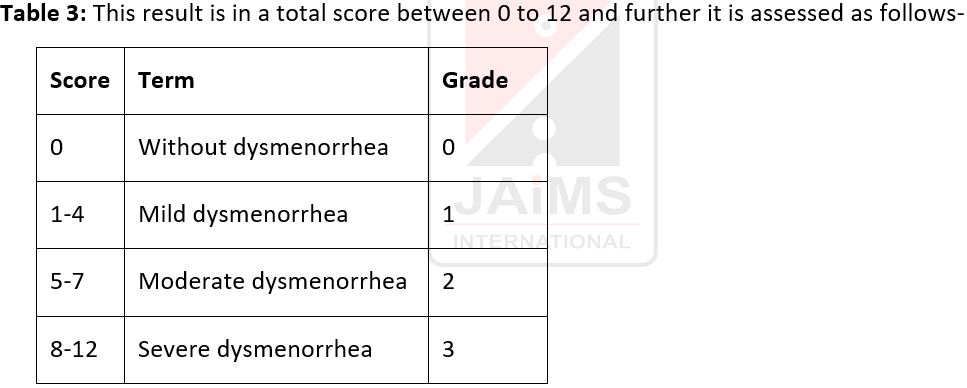A Clinical Study of Pippalayadi Phanta in Kashtartava (Primary Dysmenorrhea)
DOI:
https://doi.org/10.21760/jaims.10.2.2Keywords:
Kashtartava, Primary Dysmenorrhea, Pippalayadi Phanta, VedanaharAbstract
Introduction: Primary Dysmenorrhea, also known as Kashtartava in Ayurveda, is a common gynecological condition characterized by painful menstrual cramps that significantly affect women's quality of life. Traditional Ayurvedic texts, including those by Acharya Charak, attribute Kashtartava to Vata vitiation and emphasize the importance of Vata pacification for its management. This study evaluates the efficacy of Pippalayadi Phanta, a polyherbal formulation consisting of Pippali, Marich, Sunthi, Ajwain, and Hingu, in alleviating the symptoms of Kashtartava. Methodology: A clinical investigation was conducted to assess the formulation's impact on Shoolprashman (pain relief), Vata-Anuloman (Vata regulation), and Artavajanan (menstrual flow regulation). The preparation was presented as a heat-infused beverage in sachet form, similar to green tea, for enhanced convenience and palatability. Participants diagnosed with Primary Dysmenorrhea were evaluated through a scoring system pre- and post-treatment. Results: The findings suggest that the traditional herbs in Pippalayadi Phanta, known for their anti-inflammatory, analgesic, and muscle-relaxing properties, effectively alleviate pain and discomfort in individuals with Kashtartava. The heat-infused beverage aids in relaxing uterine muscles, and the synergistic action of the herbal components reduces inflammation and pain. The innovative sachet form of Pippalayadi Phanta ensures therapeutic benefits while offering convenience and portability. Discussion: This study contributes to the growing body of evidence supporting the use of traditional Ayurvedic formulations in managing gynecological disorders. By presenting Pippalayadi Phanta in a familiar and accessible form, the research bridges traditional Ayurvedic remedies with modern preferences, potentially offering a natural and effective alternative for individuals experiencing Primary Dysmenorrhea.
Downloads
References
Agnivesha. (2004). Charak Samhita, eds. R.K. Sharma and Bhagwan Das. Varanasi: Chaukhamba Sanskrit Series Office. Vol. 5, p. 36.
Sushruta. Sutrasthan 17/12. Explanatory notes by Kaviraj Dr. Ambika Dutt Shastri. Edition Reprint, 2013. Varanasi: Chaukhamba Sanskrit Sansthan. Part 1, p. 94.
Journal of Ayurvedic and Herbal Medicine. (2019). 5(4), 122-124.
Kho, K.A., & Shields, J.K. (2020). Diagnosis and Management of Primary Dysmenorrhea. JAMA, 323(3), 268-269. [PubMed].
Ferries-Rowe, E., Corey, E., & Archer, J.S. (2020). Primary Dysmenorrhea: Diagnosis and Therapy. Obstetrics & Gynecology, 136(5), 1047-1058.
Journal of Indian System of Medicine. (2022). 10(2), 111-119. Apr–Jun. DOI: 10.4103/jism.jism_90_21.
Shastri, K., Chaturvedi, G., Upadhyay, Y., Sastri, R.D., & Pandey, G. (1998). Agnivesha Charaka Samhita Chikitsa Sthana, 30. Varanasi: Chaukhamba Sanskrit Series. p. 843.
Omidvar, S., Bakouei, F., Amiri, F.N., & Begum, K. (2016). Primary Dysmenorrhea and Menstrual Symptoms in Indian Female Students: Prevalence, Impact, and Management. Global Journal of Health Science, 8(8), 135.















